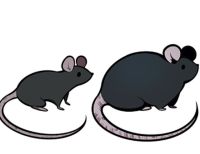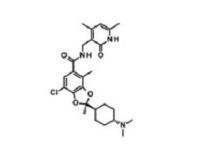
Antibiotic resistance, when infection-causing bacteria evolve so they are no longer affected by typical antibiotics, is a global concern. New research at the University of Tokyo has mapped the evolution and process of natural selection of Escherichia coli (E. coli) bacteria in the lab. These maps, called fitness landscapes, help us better understand the step-by-step development and characteristics of E. coli resistance to eight different drugs, including antibiotics. Researchers hope their results and methods will be useful for predicting and controlling E. coli and other bacteria in the future.
Have you ever felt queasy after eating an undercooked burger? Or when leftovers from yesterday’s dinner were left out of the fridge a bit too long? There are many different kinds of food poisoning, but one common cause is the growth of bacteria such as E. coli. Most cases of E. coli, though unpleasant, can be managed at home with rest and rehydration. However, in some instances, it can lead to life-threatening infections. If you have a bacterial infection, antibiotic medication can be a powerful and effective treatment. But antibiotic resistance, the ability of bacteria to become strong enough that it does not respond to the medication, is a serious global concern. If antibiotics are no longer effective, then we will once again be at risk of serious illness from small injuries and common ailments.

“The development of methods that could predict and control bacterial evolution is crucial to find and suppress the emergence of resistant bacteria,” said researcher Junichiro Iwasawa, a doctoral student in the Graduate School of Science at the time of the study. “Thus, we have developed a novel method to predict drug resistance evolution by using data obtained from laboratory evolution experiments of E. coli.”
The researchers used a method called adaptive laboratory evolution, or ALE, to “replay the tape” on the evolution of drug-resistant E. coli to eight different drugs, including antibiotics. The method enabled the researchers to study the evolution of bacterial strains with specific observable characteristics (called phenotypes) in the lab. This helped them gain insight into what changes might occur to the bacteria during the longer-term process of natural selection.
“While conventional laboratory evolution experiments have been labor intensive, we mitigated this problem by using an automated culture system that was previously developed in our lab. This allowed us to acquire sufficient data on the phenotypic changes related to drug resistance evolution,” explained Iwasawa. “By analyzing the acquired data, using principal component analysis (a machine-learning method), we have been able to elucidate the fitness landscape which underlies the drug resistance evolution of E. coli.”

Fitness landscapes look like 3D topographic maps. The mountains and valleys on the map represent an organism’s evolution. Organisms at the peaks have evolved to have better “fitness,” or ability to survive in their environment. Iwasawa explained, “The coordinates of the fitness landscape represent inner states of the organism, such as gene mutation patterns (genotypes) or drug resistance profiles (phenotypes), etc. Thus, the fitness landscape describes the relation between the inner states of the organism and its corresponding fitness levels. By elucidating the fitness landscape, the progression of evolution is expected to be predictable.”
The team believes the fitness landscapes it has mapped in this study and the methods developed in the process will be useful for predicting and controlling not only E. coli, but also other forms of microbial evolution. The researchers hope this will lead to future studies that can find ways to suppress drug-resistant bacteria and contribute to the development of useful microbes for bioengineering and agriculture. Iwasawa concluded that “the next important step is to actually try using the fitness landscapes to control drug resistance evolution and see how far we can control it. This can be done by designing laboratory evolution experiments based on the information from the landscapes. We can’t wait to see the upcoming results.”







